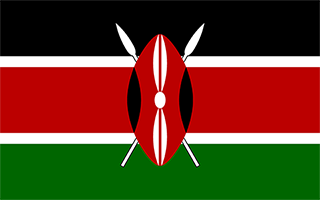Facts and Data
Webpages:
Official Unesco Page
View photos from OUR PLACE the World Heritage collection
Mount Kenya National Park (Kilimanjaro Adventure Travel)
Protectedplanet.net
Basis Data:
Unesco World heritage since: 1997
Size of heritage: 202,334 ha
- Buffer zone: 69,339 ha
Coordinates:
Longitude: 37,316°
Latitude: 0,155°
Summary
At 5,199 m, Mount Kenya is the second highest peak in Africa. It is an ancient extinct volcano, which during its period of activity (3.1-2.6 million years ago) is thought to have risen to 6,500 m. There are 12 remnant glaciers on the mountain, all receding rapidly, and four secondary peaks that sit at the head of the U-shaped glacial valleys. With its rugged glacier-clad summits and forested middle slopes, Mount Kenya is one of the most impressive landscapes in East Africa. The evolution and ecology of its afro-alpine flora provide an outstanding example of ecological and biological processes. Through the Lewa Wildlife Conservancy and Ngare Ndare Forest Reserve, the property also incorporates lower lying scenic foothills and arid habitats of high biodiversity, situated in the ecological transition zone between the mountain ecosystem and the semi-arid savanna grasslands. The area also lies within the traditional migrating route of the African elephant population.
Location on Map
Show bigger map on Openstreetmap
Mount Kenya National Park/Natural Forest
Mount Kenya National Park/Natural Forest is a UNESCO World Heritage site located in central Kenya, approximately at coordinates N0 9 18 E37 18 56. This magnificent site encompasses the stunning Mount Kenya, the second-highest peak in Africa, standing at an impressive 5,199 meters above sea level. The park covers an area of 715 square kilometers and is renowned for its exceptional natural beauty, diverse ecosystems, and rich cultural heritage.
History
The history of Mount Kenya National Park/Natural Forest dates back centuries. The mountain holds great significance for the local Kikuyu people, who consider it a sacred site and believe it to be the dwelling place of their god, Ngai. The Kikuyu have long held rituals and ceremonies on the mountain, reinforcing its cultural importance.
In 1949, Mount Kenya was declared a National Park, making it the first national park in Kenya. The park was established to protect the unique flora and fauna found on the mountain, as well as to preserve its cultural heritage. In 1997, Mount Kenya National Park was designated as a UNESCO World Heritage site, recognizing its outstanding universal value and the need for its protection.
Current State
Mount Kenya National Park/Natural Forest is a haven for biodiversity, boasting a wide range of ecosystems and species. The park is home to diverse wildlife, including elephants, buffalos, leopards, hyenas, and various species of primates. It is also a paradise for bird enthusiasts, with over 130 bird species recorded within its boundaries.
The park's vegetation is equally impressive, with distinct zones determined by altitude. The lower slopes are covered in dense montane forest, which gradually gives way to bamboo forests and then to moorland. Above 4,000 meters, the landscape transforms into alpine desert and snow-capped peaks, creating a breathtaking sight.
Mount Kenya National Park/Natural Forest offers a range of activities for visitors to enjoy. Hiking and climbing are popular pursuits, with several routes available to reach the summit. The most common route is the Sirimon-Naro Moru route, which provides stunning views and diverse landscapes along the way.
Additionally, the park offers opportunities for wildlife viewing, birdwatching, and camping. The diverse ecosystems within the park provide a unique experience for nature lovers and photographers alike.
Efforts are continuously made to preserve and protect Mount Kenya National Park/Natural Forest. The Kenya Wildlife Service, in collaboration with local communities, implements conservation programs to safeguard the park's biodiversity and cultural heritage. These initiatives include anti-poaching measures, reforestation projects, and community education programs.
Mount Kenya National Park/Natural Forest stands as a testament to the beauty and importance of Kenya's natural and cultural heritage. Its recognition as a UNESCO World Heritage site ensures its preservation for future generations to appreciate and enjoy.

